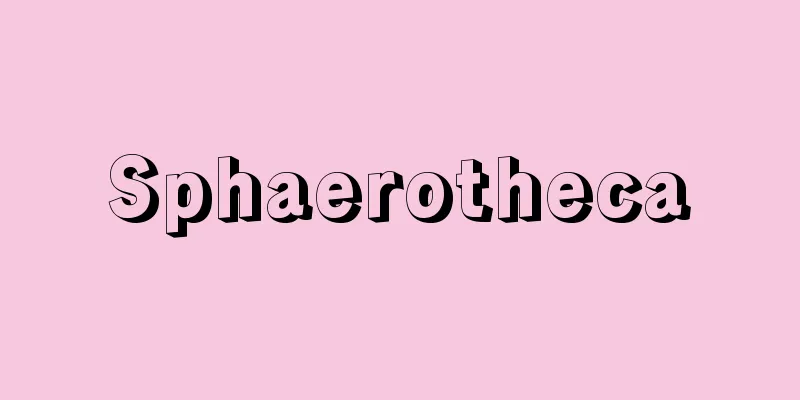"Kyoya Collar Store" - Kyoya Collar Store

|
...Next, he made a film adaptation of Tolstoy's The Living Dead (1918), which had been a huge success when it was staged by the Art Theatre. Although it was still within the realm of a "motion picture," the direction and acting direction showed a fresh willingness to break away from the old Shinpa style, and his effective use of cutbacks, moving shots, and backlighting shots attracted attention. Most of the reform movement in Japanese cinema at that time was essentially imitations of American films and adaptations of modern European dramas, but Tanaka's original screenplays for "Kyoya Eriten" (1922) and "Dance of the Skull" (1923) realistically depicted Japanese life from a Japanese perspective. In particular, "Kyoya Eriten," which tells the story of the decline of a long-established store in the downtown area over the course of the changing seasons, was the first Japanese film to be called a "masterpiece," and Tanaka's achievements as a practitioner rather than a theorist of the reform movement were marked. After the talkies, he made few films, and after retiring from the scene, he trained many talented actors at the Japan Film School. From Japanese MoviesFor example, in 1920, Nikkatsu decided to hire actresses. Also, Tanaka Eizo, who had earlier shown a fresh approach to film with his Shinpa film The Living Corpse, produced a groundbreaking film in 1922 that vividly portrayed the lives and desires of the Japanese with Kyoya Erimise, which depicted the decline of a long-established store in downtown Tokyo, and continued this approach in the following year with Skull Dance. The former still used female roles, but it is said to be the last female role film in Japan, and the latter featured Okada Yoshiko and Natsukawa Shizue (later Shizue), who would later become star actresses. *Some of the terminology used in reference to "Kyoya Collar Store" is listed below. Source | Heibonsha World Encyclopedia 2nd Edition | Information |
|
…次いで,芸術座が舞台にのせて大成功したトルストイの《生ける屍》(1918)を映画化し,まだ〈活動写真〉の域を脱しきれないものではあったが,演出や演技指導には古い新派の型を破ろうとする新鮮な意欲が見られ,カット・バック,移動撮影,逆光線撮影などが効果的に使用されて注目を浴びた。当時の日本映画の革新運動の大部分は,その内実としてはアメリカ映画の模倣やヨーロッパ近代劇の翻案であったが,田中はオリジナルシナリオによる《京屋襟店(えりてん)》(1922)と《髑髏(どくろ)の舞》(1923)で,日本人の生活を日本人の視点から写実的に描き,とくに下町の老舗が没落するものがたりを四季の移り変りのなかで描いた《京屋襟店》は,〈傑作〉と呼ばれた最初の日本映画であり,田中はそれにより映画革新運動の理論家というよりはむしろ実践家としての業績を残した。トーキー以後はほとんど作品がなく,現場から退いた後は,日本映画俳優学校で多くの人材を育てた。… 【日本映画】より…たとえば,1920年に日活が女優採用に踏みきったことである。また,先に新派《生ける屍》で新鮮な映画手法を見せた田中栄三が,22年,東京下町の老舗の没落を描いた《京屋襟店(えりみせ)》によって,日本人の生活と欲望をなまなましく表現した画期的な映画作品を出現させ,その姿勢を翌年の《髑髏(どくろ)の舞》でも貫いた。前者はまだ女形を使っているが,日本でほとんど最後の女形映画といわれ,後者にはやがてスター女優となる岡田嘉子,夏川静江(のち静枝)が出演している。… ※「《京屋襟店》」について言及している用語解説の一部を掲載しています。 出典|株式会社平凡社世界大百科事典 第2版について | 情報 |
<<: Conjugate - Kyoyaku (English spelling) conjugate
Recommend
Cantata-style motet
…He went to Paris in 1694, and from 1723 he was M...
Medgidia
...The climate is generally dry and continental, ...
Go(ai) number - Aiban
...Working according to the rank system is called...
《Po prostu》 (English spelling) Poprostu
…During the German occupation (1939-45), the scho...
Tenasserim [District] - Tenasserim
A division in the southern tip of Myanmar. Also kn...
Abu al-Abbas - Abu al-Abbas
…Reigned 750-754. Commonly known as Abū al-'A...
Entsuji Temple (Aomori) - Entsuji Temple
...the general term for a cone-shaped volcano and...
Imitative magic
… [Various types of sorcery] According to the pri...
Haya Monogatari - Haya Monogatari
A form of storytelling. It is so named because it...
primary
...Large gliders were developed for transporting ...
Hausaland
…In Hausaland (present-day northern Nigeria), a r...
Śravaṇā (English spelling) Sravana
...Following the Vedic framework, these festivals...
Tomaru basket - Tomaru basket
A cylindrical bamboo cage in which to keep one Kar...
Execution - Shugyo
〘 noun 〙① (━suru) To carry out Buddhist, political...
Gilberto, J.
...A new form of samba that was born in Brazil ar...







![Kastorias [Lake] - Kastorias](/upload/images/67d00664b5536.webp)

